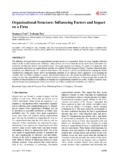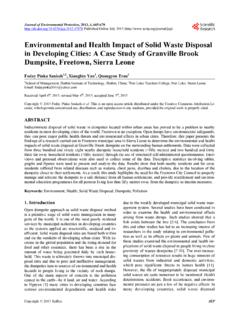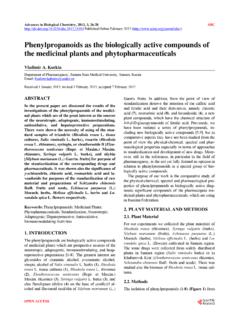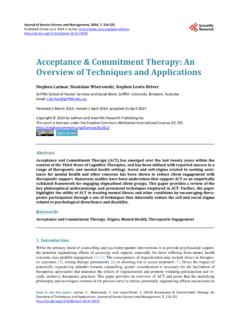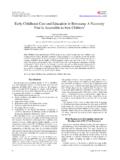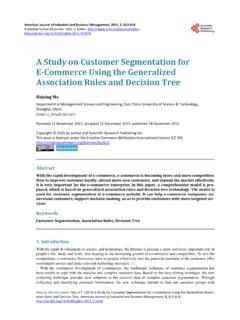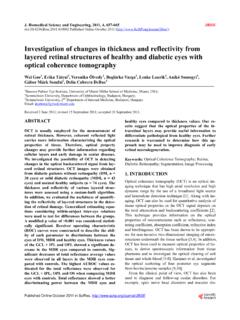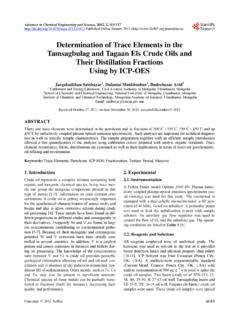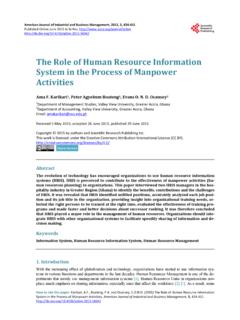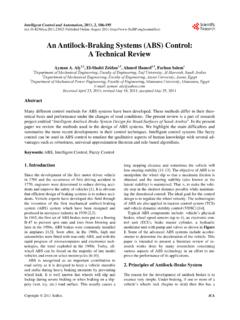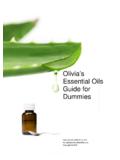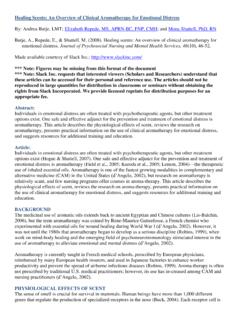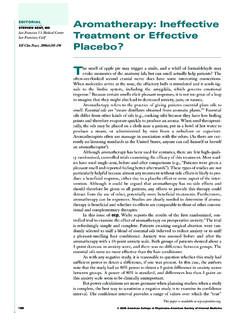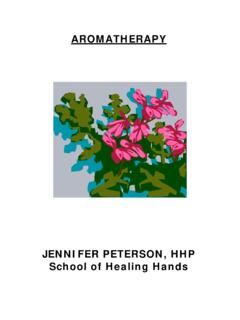Transcription of Aromatherapy for Laboring Women: A Meta-Analysis of ...
1 Open Journal of Nursing, 2014, 4, 163-168 Published Online March 2014 in SciRes. How to cite this paper: Luo, , Huang, , Xia, and Zeng, (2014) Aromatherapy for Laboring women : A Meta- Analysis of Randomized Controlled Trials. Open Journal of Nursing, 4, 163-168. Aromatherapy for Laboring women : A Meta-Analysis of Randomized Controlled Trials Taizhen Luo1*, Meiling Huang2, Huaan Xia1, Yingchun Zeng1 1 Department of Obstetrics, The Third Affiliated Hospital of Guangzhou Medical University, Guangzhou, China 2 Department of Nursing, The Third Affiliated Hospital of Guangzhou Medical University, Guangzhou, China Email: Received 29 November 2013; revised 26 January 2014; accepted 26 February 2014 Copyright 2014 by authors and Scientific Research Publishing Inc.
2 This work is licensed under the Creative Commons Attribution International License (CC BY). Abstract Aromatherapy is the therapeutic use of oil from herbs, flowers, and other plants. The aim of this Meta-Analysis was to quantify the effectiveness of Aromatherapy for Laboring women . We searched five electronic databases till November 15th 2013 including those Chinese and English language articles. A total of 4 eligible studies were identified. Aromatherapy was effective in reducing the length of labor, but there were no statistically significant effects in the use of pharmacological analgesia, spontaneous vaginal delivery, caesarean delivery and assisted vaginal birth.
3 Due to the limited number of articles identified, the evidence is not sufficiently convincing that aromathera-py is an effective therapy for Laboring women . Keywords Aromatherapy ; Laboring women ; Randomized Controlled Trials; Meta-Analysis 1. Introduction Labor presents a physiological and psychological challenge for women [1]. Childbirth is arguably one of the most painful experiences and the most significant physical challenge for women to undergo during their lives [2]. Pain is caused by uterine contractions, cervical dilatation, and vaginal and pelvic floor stretching to accommo-date the baby [1] [3].
4 Psychological challenges include tension, anxiety and fear, which are factors contributing towards women s perception of pain and may also affect their labor and birth experience [1]. women increasingly use complementary therapies as a means of retaining control over their childbearing ex- *Corresponding author. T. Z. Luo et al. 164 periences and as additional choices for managing antenatal symptoms and intrapartum comfort and progress [4]. Nowadays, using alternative and complementary therapies such as essential oils in Aromatherapy has been rec- ognized in obstetrics [5]. Aromatherapy involves the use of the essential oils from herbs, flowers, and other plants [6].
5 The oils may be massaged into the skin, or inhaled by using a steam infusion or burner. The most common application of Aromatherapy during labor is by massage, bath or inhalation [7]. Due to the increasing popularity of application of Aromatherapy for Laboring women , the aim of this study was to examine the effects of Aromatherapy on the delivery outcomes of Laboring women through systematic review and Meta-Analysis . 2. Methods Five databases (Medline, CINAHL, Scopus, The Cochrane Library, and CAJ Full-text Database) were searched until November 15, 2013, and articles published in English and Chinese were included in the data sample.
6 The search terms included Aromatherapy , labor , delivery , and intrapartum midwifery practice . Eligible stu-dies were randomized controlled trials (RCTs), eligible types of participants were women in labor, and types of interventions included the use of any type of Aromatherapy for labouring women . For each study included, data were extracted from the original paper independently by one of the main re-searcher and then verified by another researcher. Disagreements concerning data extraction were resolved by discussion. Trial quality was judged based on five domains: random sequence generation, allocation conceal-ment, assessor blinding, patient blinding, and incomplete outcome data (Table 1).
7 The Cochrane Collaboration s Review Manager (RevMan ) was used to generate pooled estimates of effect size. Table 1. Summary of the 4 clinical trials of Aromatherapy for women in labor. Trials Participants Intervention Comparison Main outcome Study design Risk of bias Burns et al. [8] 513 women with a singleton pregnancy The experimental group received Aromatherapy . Modes of application included acupressure points, taper, compress, footbath, massage or birthing pool. The control group received usual care. Pain intensity (only Aromatherapy group), assisted vaginal birth, caesarean section, use of pharmacological pain relief, spontaneous vaginal delivery, length of labour, augmentation, and perineal trauma.
8 RCT, Parallel Y,Y,N,N,Y Calvert et al. [9] 22 multiparous women with a singleton pregnancy. women were recruited during the antenatal period The experimental group received essential oil of ginger for the bath at least 1 hour. The control group received essential oil of lemon grass for the bath at least 1 hour. Pain intensity (only Aromatherapy group), assisted vaginal birth, caesarean section, use of pharmacological pain relief, spontaneous vaginal delivery, length of first and second stage of labour, frequency of contractions, and cervical dilatation. RCT, double-blind Y,Y,Y,Y,Y Vakilian & Keramat [10] 120 primiparous women planning a vaginal delivery Essential oil of lavender with breathing technique via nebuliser during contractions in the active phase of labour Breathing techniques without Aromatherapy Duration of the first phase and the second stage of labour.
9 RCT, single blinded Y,Y,N,N,Y Zahra & Leila [11] 60 primiparous women planning a normal delivery Aromatherapy massage with Lavender oil Receiving massage only Pain, duration of the first phase and the second & third stages of labour. RCT Y,Y,N,N,Y Risk of bias (sequence generation, allocation concealment, assessor blinding, patient blinding, description of incomplete outcome data); Y, Yes; N, No; RCT, Randomized Controlled Trial. T. Z. Luo et al. 165 3. Results Description of Included Studies A total of 4 RCTs were included in this review. The selection of studies is shown in Figure 1.
10 Of these 4 trials, one trial [8] compared Aromatherapy intervention with usual care. Three [9]-[11] adopted Aromatherapy as study interventions, and used other active interventions including other types of Aromatherapy , breathing techniques and massage as control. The characteristics of these 4 trials are summarized in Table 1. Effects of Aromatherapy Intervention Four RCTs with a total of 715 subjects included in this review, these 4 studies reported enough data to generate pooled estimates of effect size of Aromatherapy for the delivery outcomes of Laboring women . Effects on Using of Pharmacological Analgesia Two studies [8] [9] examined the effects of Aromatherapy on the use of epidural analgesia among Laboring women .
